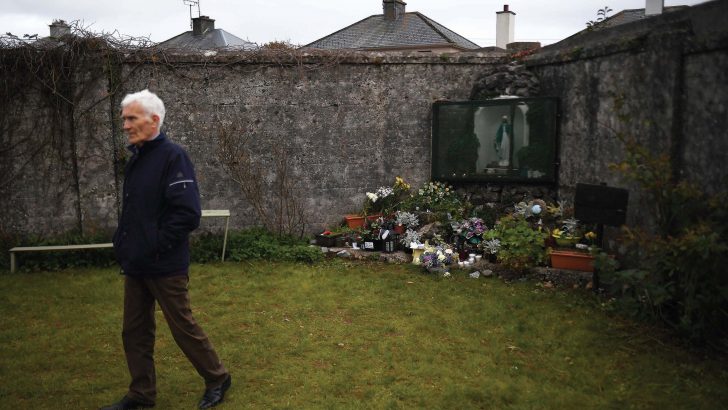None of us are served unless we have a debate that is rounded and looks at attitudes in other countries, writes David Quinn
Much of the commentary down the years about the mother and baby home has focused on the role the Church played in creating harsh attitudes towards unmarried mothers and their children. The clear implication is that were it not for the Catholic Church, we would have been much kinder in our treatment of both groups.
It was the Church’s obsessive attitude towards various sexual sins, especially sex outside marriage, we are told, which created the climate that led to the mother and baby homes, which are the subject of a massive official report that was published this week.
And certainly, it is true that Catholic morality at the time was often harsh and condemnatory, aimed more at keeping people in line and sometimes punishing them, than at showing mercy.
Removed
But if the Catholic Church had been totally removed from Irish society would attitudes towards unmarried mothers and their children have been very different? The answer is, almost certainly not because we find very similar attitudes at the time almost everywhere, whether it be in Asia, Africa, Muslim countries, Protestant countries, or indeed secular countries like Sweden.
Indeed, in much of the world to this day, those harsh attitudes still often exist, driven usually by economic factors because there is a very strong link between punitive attitudes towards unmarried mothers and ‘illegitimate’ children, and poverty.
Conversely, as a country becomes richer, its attitudes in this regard tend to soften.
Mother and baby homes are neither an Irish invention, nor a Catholic one. They were very widespread in Britain, for example, and only about one in ten was run by the Catholic Church.
Children were commonly adopted out. The peak year in England was 1968, when 16,000 were placed for adoption, sometimes against the will of the mother.
Note that in the previous year, England’s abortion law had been liberalised. In addition to British society becoming richer, and the Welfare State more generous as a consequence, abortion began to displace both adoption and the mother and baby homes.
Mother and baby homes were also very widespread in the United States. It was the same in Australia, Canada and New Zealand, none of them Catholic countries.
But perhaps religion was to blame, not Catholicism per se, and if we take religion out of the picture, things improve. This isn’t true either, as we can see from the example of Sweden.
The mother and baby homes report covers the period from 1922 until the 1990s when the last of them closed, although numbers in them greatly abated from the 1970s as attitudes changed and Ireland became richer.
But if you take the period when they were at their peak, from 1922 until the 1960s or 1970s, in many other countries a philosophy of eugenics was being widely promoted that sought to ‘better’ the population through measures like sterilisation, so that the ‘unfit’ could not breed.
Targets
One of the targets of those programmes was unmarried mothers and eugenics was particularly strong in countries like Sweden which was ruled continuously by the Social Democratic party from the 1930s until the 1970s and ran a sterilisation programme through that time which targeted women in 90pc of the 60,000 cases, some of them unmarried mothers.
As Cambridge historian Professor Véronique Mottier writes, among the victims of these policies were “socially deviant groups such as unmarried mothers”.
It was the same in Switzerland.
This totally destroys the notion that countries dominated by secular, ‘scientific’ thinking would have been more humane. The opposite was the case. In fact, in those countries it was often the Catholic Church which mostly strongly fought against eugenics.
Mortality rates in the mother and baby homes were higher than among the general population. Infant morality rates were about twice as high in them, and the general infant mortality rate was high to begin with.
But a key reason for the high number of deaths in mother and baby homes was the fact that they were congregated settings.
We saw a very high number of deaths from or with Covid-19 in our nursing homes last April and May, far higher than among older people in the general population. Why? Because it is very easy for infection to spread in in those homes, and that is what happened, especially when elderly people were switched from hospitals to nursing homes without being tested for Covid, when staff didn’t have enough PPE, and when the HSE was competing against them for nursing staff. When will this merit more public outrage?
Even now, after all we have learnt about fighting Covid, nursing homes remain very vulnerable. In a pandemic, they are the worst places to be because they are extremely difficult to completely protect.
In the mother and baby homes, we can see from death certificates how the infants and young children died. It was frequently from very deadly (to children) infections like measles. Once measles got into a home, the children would often die in clusters because it spread so easily.
The reason nursing homes remain so vulnerable to Covid is because we had no vaccination against it. With a vaccination now being rolled out, hopefully the death rate in nursing homes will plunge.
It was only when vaccinations against diseases like measles were invented, plus antibiotics, that the infant mortality rate in mother and baby homes, and society at large, really began to plunge. That was from the 1950s in particular.
Almost all of the deaths in the homes occurred before this time.
How much of this will be pointed out in commentary about the mother and baby homes now that the report is out? To judge from past performance, almost certainly very little. We don’t believe in having a fully rounded discussion of the issue.


 David Quinn
David Quinn Mulryan, a former resident of the Tuam mother and baby home walks away after laying flowers before a 2018 service at the site. Photo: CNS/Clodagh Kilcoyne.
Mulryan, a former resident of the Tuam mother and baby home walks away after laying flowers before a 2018 service at the site. Photo: CNS/Clodagh Kilcoyne. 